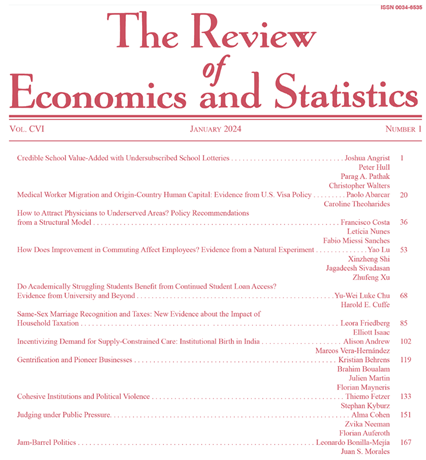The Essence of Institutional Mechanisms of Population Adaptation and Assessment of their Effectiveness
IF 6.8
1区 经济学
Q1 ECONOMICS
引用次数: 0
Abstract
The purpose of the study is to determine the level of effectiveness of institutional mechanisms of the population adaptation of the region. The relevance of the study is related to the problems of reflecting the essence of the institutional mechanisms of the population adaptation, which affect their effectiveness in the transition to dynamic development. It is assumed that the determination of the effectiveness of institutional mechanisms of the population adaptation of the region is evaluated on the basis of characteristics of population reproduction, growth of value added and people’s standard of living. The interaction of institutional mechanisms of the population adaptation with six institutional sectors of the economy is considered. The research methods are the theory and methodology of statistics, including the index and tabular method, grouping of data, series of dynamics and comparative estimates. To determine the essence of the institutional mechanisms of the population adaptation of the region, a statistical approach was used. The author gives an assessment of the level of effectiveness of the region according to 9 main quantitative and qualitative indexes that objectively reflect the general state of the economy, the standard of living of the population and the evolution of institutional mechanisms of the population adaptation for the period 1990-2020.Research results: the concept of the institutional mechanism of the population adaptation is clarified as a set of consistent actions of socioeconomic institutions, ensuring their effective interaction through the implementation of formal and informal rules, norms and standards in order to improve the level and quality of life of the population. In this regard, a toolkit has been developed to determine the effectiveness of institutional mechanisms of the population adaptation in terms of population reproduction, value-added growth, and the standard of living of the population. Over the past 30 years, there have been significant changes in many regions of the country regarding the use of institutional mechanisms for the population adaptation, which have contributed to improving the level of efficiency of business entities and revealing the characteristics of specific territories. However, in a number of regions of the country, including the Kurgan region, there is a significant decrease in the number and migration outflow of the population, real incomes of the population are slowly increasing.Conclusion: the use of the statistical approach makes it possible to determine not only the effectiveness of institutional mechanisms of the population adaptation, but also the effectiveness of the implemented development strategies for the future and the quality of the adopted decisions by management bodies. The interrelations of the used institutional mechanisms of the population adaptation with the level of economic potential of the territory are revealed. It is established that the population adapts faster to improved institutional mechanisms, while reducing social tension and increasing support for people in crisis situations. The main directions of further research on the problems of changes in the institutional mechanisms of the population adaptation and assessment of their effectiveness in the transition to dynamic development are substantiated.人口适应体制机制的本质及其有效性评价
本研究的目的是确定该区域人口适应体制机制的有效性水平。该研究的相关性涉及反映人口适应体制机制的本质问题,这些问题影响到人口适应体制机制在向动态发展过渡过程中的有效性。本文认为,区域人口适应体制机制有效性的确定是基于人口再生产特征、增加值增长特征和人民生活水平特征来评价的。考虑了人口适应的制度机制与经济的六个制度部门的相互作用。研究方法是统计学的理论和方法,包括指数和表格法、数据分组法、系列动态法和比较估计法。为了确定该区域人口适应的体制机制的本质,采用了统计方法。作者根据客观反映1990-2020年区域经济总体状况、人口生活水平和人口适应体制机制演变的9项主要定量和定性指标,对区域的有效性水平进行了评价。研究成果:将人口适应的制度机制概念明确为社会经济机构的一系列一致行动,通过实施正式和非正式的规则、规范和标准,确保它们有效互动,以提高人口的生活水平和质量。在这方面,已经开发了一个工具包,以确定人口适应体制机制在人口再生产、增值增长和人口生活水平方面的有效性。近30年来,我国许多地区在利用人口适应体制机制方面发生了重大变化,有助于提高商业实体的效率水平,揭示特定地区的特点。然而,在该国的一些地区,包括库尔干地区,人口的数量和移徙外流都有显著减少,人口的实际收入正在缓慢增加。结论:使用统计方法不仅可以确定人口适应体制机制的有效性,而且可以确定执行的未来发展战略的有效性和管理机构通过的决定的质量。揭示了人口适应的体制机制与领土经济潜力水平的相互关系。可以确定的是,人口更快地适应改进的体制机制,同时减少社会紧张局势,增加对处于危机局势中的人的支助。提出了人口适应体制机制变化问题及其在向动态发展过渡过程中有效性评价的主要研究方向。
本文章由计算机程序翻译,如有差异,请以英文原文为准。
求助全文
约1分钟内获得全文
求助全文
来源期刊

Review of Economics and Statistics
Multiple-
CiteScore
8.50
自引率
0.00%
发文量
175
期刊介绍:
The Review of Economics and Statistics is a 100-year-old general journal of applied (especially quantitative) economics. Edited at the Harvard Kennedy School, the Review has published some of the most important articles in empirical economics.
 求助内容:
求助内容: 应助结果提醒方式:
应助结果提醒方式:


